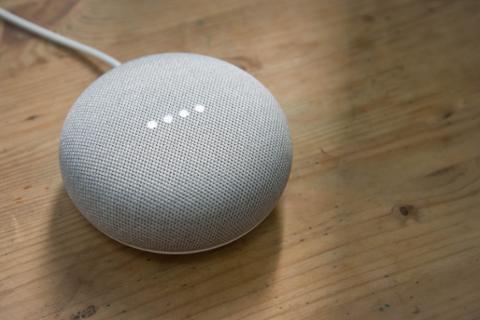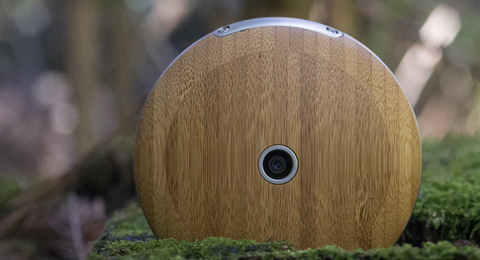 What do you mean, it doesn't do email?[/caption] The question at this juncture is, who isn’t building a smart-watch? First, rumors circulated that Apple had some sort of “iWatch” in development, followed by Samsung announcing its work on a smartphone-like timepiece. LG is building a similar device, according to Korea Times (and reported by CNN), along with a pair of digitally enhanced eyeglasses reminiscent of Google Glass. And now Google, apparently not content to restrict itself to augmented-reality eyewear, has launched its own smart-watch program, according to the Financial Times. If the rumors about Google’s timepiece project are accurate, then the search-engine giant has handed the development reins to its Android unit, which knows a little something about building software for small devices. The Financial Times also cited Google’s 2011 patent for a “smart-watch,” which featured an integrated camera and a touch-screen capable of flipping up and acting like a secondary display—but its questionable whether that design would have any bearing whatsoever on a final product. (The Verge doesn’t seem to think so, in any case.) As a concept, smart-watches aren’t new. Dick Tracy used one for years to communicate with police headquarters, and science fiction has dabbled in wearable electronics for decades. If all this scuttlebutt actually pans out, though, it might not be too long before actual people are walking around with a timepiece capable of smartphone-style functions. Those actual functions are a subject of much debate. Back in February, The New York Times suggested that Apple’s iWatch would give owners a way to check messages or texts without needing to retrieve their iPhone from a pocket. There’s also the possibility—suggested not by the Times, but certainly any number of bloggers over the past few weeks—that an iWatch could respond to verbal commands via the Siri voice-activated assistant, offer navigation, and even act as a biometric reader or digital wallet. A timepiece’s small size creates some special challenges for designers and engineers. For one thing, there’s the issue of battery life: while people are seemingly more than happy to plug their smartphone into the nearest power source once a day, they’re likely unwilling to do the same with a watch. Also, timepiece faces are much smaller than smartphone screens, meaning that a lot of features will need to be redesigned for that shrunken space—if not discarded entirely. But those issues—and many more, no doubt—are exactly what lots of very smart people are reportedly trying to solve at exactly this moment. Image: Mile Atanasov/Shutterstock.com
What do you mean, it doesn't do email?[/caption] The question at this juncture is, who isn’t building a smart-watch? First, rumors circulated that Apple had some sort of “iWatch” in development, followed by Samsung announcing its work on a smartphone-like timepiece. LG is building a similar device, according to Korea Times (and reported by CNN), along with a pair of digitally enhanced eyeglasses reminiscent of Google Glass. And now Google, apparently not content to restrict itself to augmented-reality eyewear, has launched its own smart-watch program, according to the Financial Times. If the rumors about Google’s timepiece project are accurate, then the search-engine giant has handed the development reins to its Android unit, which knows a little something about building software for small devices. The Financial Times also cited Google’s 2011 patent for a “smart-watch,” which featured an integrated camera and a touch-screen capable of flipping up and acting like a secondary display—but its questionable whether that design would have any bearing whatsoever on a final product. (The Verge doesn’t seem to think so, in any case.) As a concept, smart-watches aren’t new. Dick Tracy used one for years to communicate with police headquarters, and science fiction has dabbled in wearable electronics for decades. If all this scuttlebutt actually pans out, though, it might not be too long before actual people are walking around with a timepiece capable of smartphone-style functions. Those actual functions are a subject of much debate. Back in February, The New York Times suggested that Apple’s iWatch would give owners a way to check messages or texts without needing to retrieve their iPhone from a pocket. There’s also the possibility—suggested not by the Times, but certainly any number of bloggers over the past few weeks—that an iWatch could respond to verbal commands via the Siri voice-activated assistant, offer navigation, and even act as a biometric reader or digital wallet. A timepiece’s small size creates some special challenges for designers and engineers. For one thing, there’s the issue of battery life: while people are seemingly more than happy to plug their smartphone into the nearest power source once a day, they’re likely unwilling to do the same with a watch. Also, timepiece faces are much smaller than smartphone screens, meaning that a lot of features will need to be redesigned for that shrunken space—if not discarded entirely. But those issues—and many more, no doubt—are exactly what lots of very smart people are reportedly trying to solve at exactly this moment. Image: Mile Atanasov/Shutterstock.com Everyone’s Building a Smart-Watch Right Now
[caption id="attachment_8680" align="aligncenter" width="500"]  What do you mean, it doesn't do email?[/caption] The question at this juncture is, who isn’t building a smart-watch? First, rumors circulated that Apple had some sort of “iWatch” in development, followed by Samsung announcing its work on a smartphone-like timepiece. LG is building a similar device, according to Korea Times (and reported by CNN), along with a pair of digitally enhanced eyeglasses reminiscent of Google Glass. And now Google, apparently not content to restrict itself to augmented-reality eyewear, has launched its own smart-watch program, according to the Financial Times. If the rumors about Google’s timepiece project are accurate, then the search-engine giant has handed the development reins to its Android unit, which knows a little something about building software for small devices. The Financial Times also cited Google’s 2011 patent for a “smart-watch,” which featured an integrated camera and a touch-screen capable of flipping up and acting like a secondary display—but its questionable whether that design would have any bearing whatsoever on a final product. (The Verge doesn’t seem to think so, in any case.) As a concept, smart-watches aren’t new. Dick Tracy used one for years to communicate with police headquarters, and science fiction has dabbled in wearable electronics for decades. If all this scuttlebutt actually pans out, though, it might not be too long before actual people are walking around with a timepiece capable of smartphone-style functions. Those actual functions are a subject of much debate. Back in February, The New York Times suggested that Apple’s iWatch would give owners a way to check messages or texts without needing to retrieve their iPhone from a pocket. There’s also the possibility—suggested not by the Times, but certainly any number of bloggers over the past few weeks—that an iWatch could respond to verbal commands via the Siri voice-activated assistant, offer navigation, and even act as a biometric reader or digital wallet. A timepiece’s small size creates some special challenges for designers and engineers. For one thing, there’s the issue of battery life: while people are seemingly more than happy to plug their smartphone into the nearest power source once a day, they’re likely unwilling to do the same with a watch. Also, timepiece faces are much smaller than smartphone screens, meaning that a lot of features will need to be redesigned for that shrunken space—if not discarded entirely. But those issues—and many more, no doubt—are exactly what lots of very smart people are reportedly trying to solve at exactly this moment. Image: Mile Atanasov/Shutterstock.com
What do you mean, it doesn't do email?[/caption] The question at this juncture is, who isn’t building a smart-watch? First, rumors circulated that Apple had some sort of “iWatch” in development, followed by Samsung announcing its work on a smartphone-like timepiece. LG is building a similar device, according to Korea Times (and reported by CNN), along with a pair of digitally enhanced eyeglasses reminiscent of Google Glass. And now Google, apparently not content to restrict itself to augmented-reality eyewear, has launched its own smart-watch program, according to the Financial Times. If the rumors about Google’s timepiece project are accurate, then the search-engine giant has handed the development reins to its Android unit, which knows a little something about building software for small devices. The Financial Times also cited Google’s 2011 patent for a “smart-watch,” which featured an integrated camera and a touch-screen capable of flipping up and acting like a secondary display—but its questionable whether that design would have any bearing whatsoever on a final product. (The Verge doesn’t seem to think so, in any case.) As a concept, smart-watches aren’t new. Dick Tracy used one for years to communicate with police headquarters, and science fiction has dabbled in wearable electronics for decades. If all this scuttlebutt actually pans out, though, it might not be too long before actual people are walking around with a timepiece capable of smartphone-style functions. Those actual functions are a subject of much debate. Back in February, The New York Times suggested that Apple’s iWatch would give owners a way to check messages or texts without needing to retrieve their iPhone from a pocket. There’s also the possibility—suggested not by the Times, but certainly any number of bloggers over the past few weeks—that an iWatch could respond to verbal commands via the Siri voice-activated assistant, offer navigation, and even act as a biometric reader or digital wallet. A timepiece’s small size creates some special challenges for designers and engineers. For one thing, there’s the issue of battery life: while people are seemingly more than happy to plug their smartphone into the nearest power source once a day, they’re likely unwilling to do the same with a watch. Also, timepiece faces are much smaller than smartphone screens, meaning that a lot of features will need to be redesigned for that shrunken space—if not discarded entirely. But those issues—and many more, no doubt—are exactly what lots of very smart people are reportedly trying to solve at exactly this moment. Image: Mile Atanasov/Shutterstock.com
 What do you mean, it doesn't do email?[/caption] The question at this juncture is, who isn’t building a smart-watch? First, rumors circulated that Apple had some sort of “iWatch” in development, followed by Samsung announcing its work on a smartphone-like timepiece. LG is building a similar device, according to Korea Times (and reported by CNN), along with a pair of digitally enhanced eyeglasses reminiscent of Google Glass. And now Google, apparently not content to restrict itself to augmented-reality eyewear, has launched its own smart-watch program, according to the Financial Times. If the rumors about Google’s timepiece project are accurate, then the search-engine giant has handed the development reins to its Android unit, which knows a little something about building software for small devices. The Financial Times also cited Google’s 2011 patent for a “smart-watch,” which featured an integrated camera and a touch-screen capable of flipping up and acting like a secondary display—but its questionable whether that design would have any bearing whatsoever on a final product. (The Verge doesn’t seem to think so, in any case.) As a concept, smart-watches aren’t new. Dick Tracy used one for years to communicate with police headquarters, and science fiction has dabbled in wearable electronics for decades. If all this scuttlebutt actually pans out, though, it might not be too long before actual people are walking around with a timepiece capable of smartphone-style functions. Those actual functions are a subject of much debate. Back in February, The New York Times suggested that Apple’s iWatch would give owners a way to check messages or texts without needing to retrieve their iPhone from a pocket. There’s also the possibility—suggested not by the Times, but certainly any number of bloggers over the past few weeks—that an iWatch could respond to verbal commands via the Siri voice-activated assistant, offer navigation, and even act as a biometric reader or digital wallet. A timepiece’s small size creates some special challenges for designers and engineers. For one thing, there’s the issue of battery life: while people are seemingly more than happy to plug their smartphone into the nearest power source once a day, they’re likely unwilling to do the same with a watch. Also, timepiece faces are much smaller than smartphone screens, meaning that a lot of features will need to be redesigned for that shrunken space—if not discarded entirely. But those issues—and many more, no doubt—are exactly what lots of very smart people are reportedly trying to solve at exactly this moment. Image: Mile Atanasov/Shutterstock.com
What do you mean, it doesn't do email?[/caption] The question at this juncture is, who isn’t building a smart-watch? First, rumors circulated that Apple had some sort of “iWatch” in development, followed by Samsung announcing its work on a smartphone-like timepiece. LG is building a similar device, according to Korea Times (and reported by CNN), along with a pair of digitally enhanced eyeglasses reminiscent of Google Glass. And now Google, apparently not content to restrict itself to augmented-reality eyewear, has launched its own smart-watch program, according to the Financial Times. If the rumors about Google’s timepiece project are accurate, then the search-engine giant has handed the development reins to its Android unit, which knows a little something about building software for small devices. The Financial Times also cited Google’s 2011 patent for a “smart-watch,” which featured an integrated camera and a touch-screen capable of flipping up and acting like a secondary display—but its questionable whether that design would have any bearing whatsoever on a final product. (The Verge doesn’t seem to think so, in any case.) As a concept, smart-watches aren’t new. Dick Tracy used one for years to communicate with police headquarters, and science fiction has dabbled in wearable electronics for decades. If all this scuttlebutt actually pans out, though, it might not be too long before actual people are walking around with a timepiece capable of smartphone-style functions. Those actual functions are a subject of much debate. Back in February, The New York Times suggested that Apple’s iWatch would give owners a way to check messages or texts without needing to retrieve their iPhone from a pocket. There’s also the possibility—suggested not by the Times, but certainly any number of bloggers over the past few weeks—that an iWatch could respond to verbal commands via the Siri voice-activated assistant, offer navigation, and even act as a biometric reader or digital wallet. A timepiece’s small size creates some special challenges for designers and engineers. For one thing, there’s the issue of battery life: while people are seemingly more than happy to plug their smartphone into the nearest power source once a day, they’re likely unwilling to do the same with a watch. Also, timepiece faces are much smaller than smartphone screens, meaning that a lot of features will need to be redesigned for that shrunken space—if not discarded entirely. But those issues—and many more, no doubt—are exactly what lots of very smart people are reportedly trying to solve at exactly this moment. Image: Mile Atanasov/Shutterstock.com 

